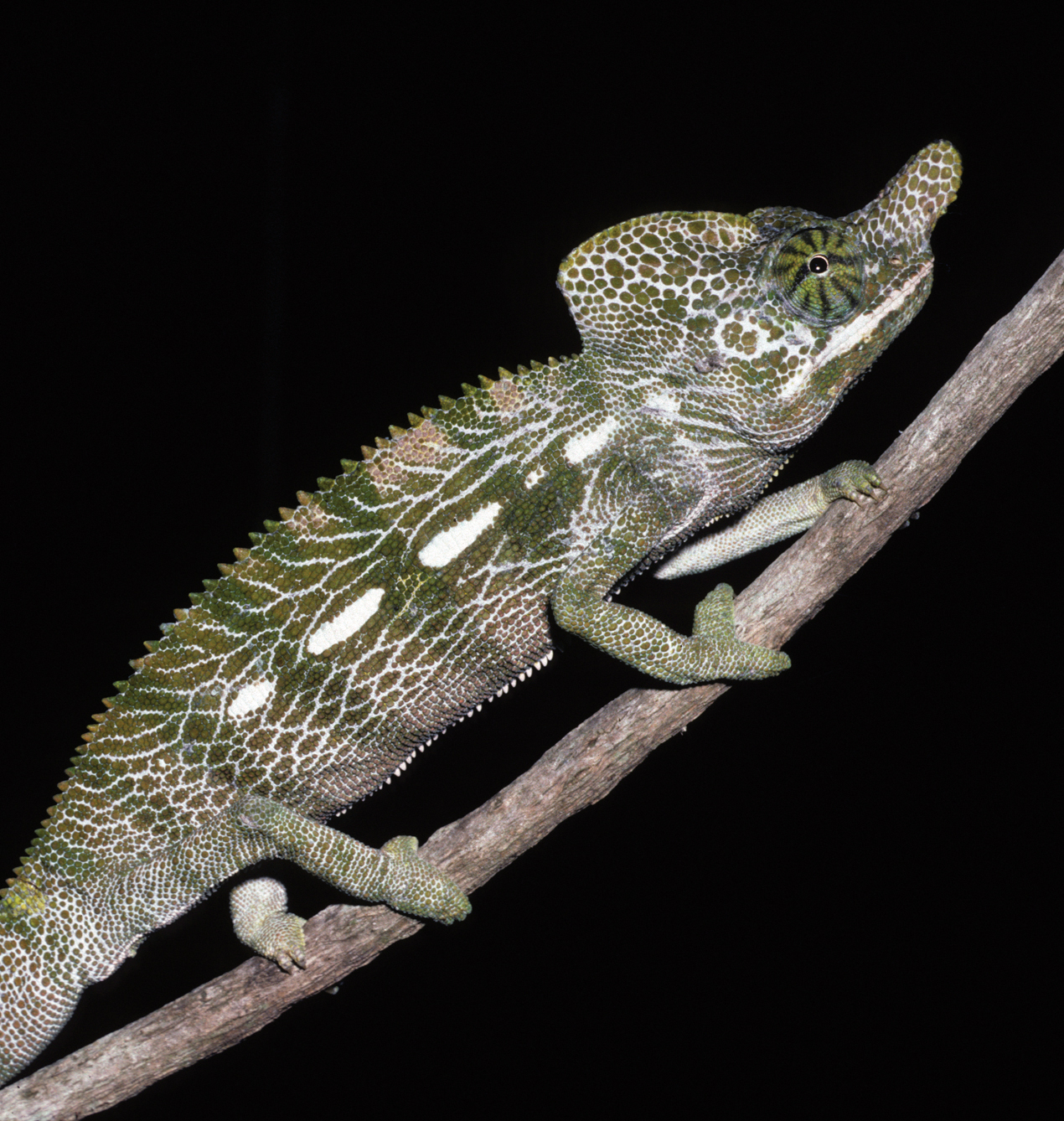
Some animals give rockers and daredevils a run for their money when it comes to the old live fast die young adage.
Madagascar’s Labord’s chameleon (pictured above) is one of the most extreme examples. These gorgeously mosaicked lizards are alive for just a single year, and only out of its shell for four or five months. Their life-cycles are set around the region’s rainy season, emerging from their shells in November then spending a month or two transitioning into adults.
After a super-short mating season the chameleons begin to die, right before the region’s unbearably dry months set in, conditions these little guys wouldn’t be able to survive. At the height of the dry season, the entire population’s fate lies entirely in eggs buried underground.
While this is an extraordinary case of adaption, it’s also a pretty risky strategy. One bad year and entire communities could be wiped out for good—their genetic material lost potentially forever. Not to mention it must feel pretty creepy to be the exact same age as everyone you know, and ever will.

Photo source: BioMed Central Limited
African annual fishes are another example of a critter fine-tuned to take advantage of the rainy season. Though we’re still learning about this group of extreme survivors—living in puddles that only temporarily exist—what’s been determined so far make these tiny fish vertebrate-record holders.
They can increase their body weight by about a quarter a day, reaching sexually maturity after just 17 days of life. Eggs hatch about 15 days after they’re laid. The population persists throughout the drier months in a dormant embryo form—waiting in the dusty-soil for the rains to return.

For a worker bee, her lifespan depends on when she’s born. Those entering life in the slower fall and winter months may live as long as six to nine month, but in summer, they might not even make it a month. Their names are no misnomer—and it’s the reason for this discrepancy.
For the first few weeks of life worker bees are called house bees, devoting all their time to hive-care. They clean the hive for the Queen to lay eggs, and act as a nurse to the regent’s brood, feeding few day old larvae honey-pollen mixtures and younger bees milk produced from her own head.
House bees also wait on the Queen and build comb-extensions onto the hive, package honey, and carry out hive-security duties—like executions. When their ability to produce milk wanes, they head out of the hive to forage for food, becoming field bees. From there, life becomes a gamble, the rate of aging basically determined by how hard they work, and whether or not they deploy their stinger.

Some species of Mayfly live just one day. That’s it—a mere 24 hours. Freshly hatched nymphs rest on waterside vegetation or trees for a few hours after emerging from their watery nursery, before shedding their skin and transforming into a stage called a spinner.
Mature males swarm over the water’s surface, and females fly out to meet them when they’re ready to mate. After undergoing the act in flight, females lay their eggs on the water’s surface, then collapse—usually falling prey to hungry fish that nibble off her wings and limbs.
Around the same time, males usually fly to land to die. Eggs make their way down the water column, sticking to plants, sticks or rocks. The total lifespan of each mayfly is dependent on its species—some only stick around for this record-shattering 24 hours but others can live a couple years.
There are 790 species of Hairy-bellied worms, or Gastrotrichs, that live in fresh, brackish and saltwater inland marine environments all over the world. Most live between just three days and three weeks, usually in massive communities comprised of 10 to 50 species, making them some of the most abundant animals in their ecosystems.
But you’re unlikely to see one for yourself—at sizes ranging from 0.06 to 4 millimeters. Females are parthenogenic and sometimes born already pregnant, laying the first of an average four eggs as early as a day after their own birth. Eggs rapidly develop—some hatching the very next day—and the species doesn’t have a larval stage.
Most gastrotrichs become hermaphrodites after their first solo mission, but each species displays differences in this regard. In freshwater communities, individuals can remain almost entirely female.

